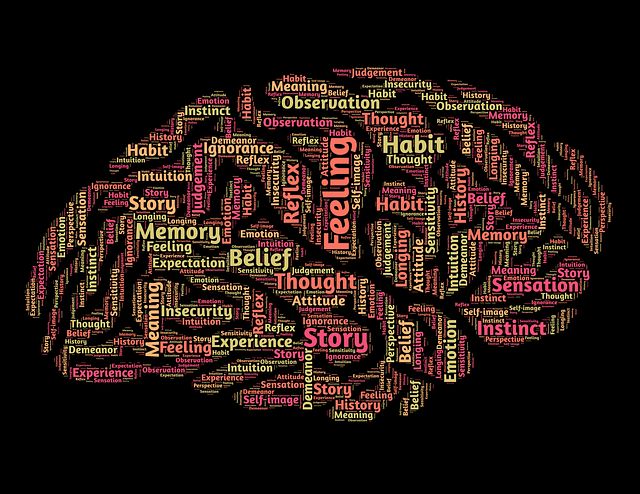Neuromarketing is part of modern market research, where neuroscience combines with marketing in order to better understand consumer behavior and, ultimately, better market products to consumers. In somewhat simple terms, it is how researchers use cognitive and biometrical measures in order to see consumers’ reactions to marketing stimuli (like an advertisement, video, packaging, or concept) and try to predict the consumer behavior; i.e., whether consumers would buy the product.
Neuromarketing aims to explore the subconscious details that shape consumer behavior. Oftentimes, consumers cannot or do not want to explain the reasons they are attracted to a certain advertisement more than another in traditional marketing research methods, like questionnaires or focus groups.
There are many different techniques of neuromarketing. They can be grouped into two main groups: tools for measuring brain activity, and those that measure non-brain activity.

Tools for measuring brain activity
EEG (Electroencephalography)
Measuring EEG might at first seem like it uses a device from a sci-fi movie. A cap which has electrodes attached to it is placed on a person’s head. It is designed to track electric waves in the brain in order measure the engagement level of the user to the stimuli. It is the most preferred tool for measuring brain activity, as it is portable and easy to use.
fMRI (functional Magnetic Resonance Imaging)
A functional MRI scans where blood is flowing in the brain. It is considered to be relatively expensive compared to EEG, since one hour can cost $1000 USD. It also requires the person to remain completely still in the fMRI device. Despite high costs, it is considered to be the most effective tool in giving insights into brain activity, as it shows the parts of the brain that are most active as being ''lit up''.
Tools for measuring non-brain activity
Eyetracking
Eyetracking involves using a device in the form of headset or eyeglasses with two or more cameras capturing the eye movements of the user while he or she is looking at a print advertisement, a video, a website or a shelf at the supermarket. It aims to find out what attracts attention, how long people look at things and what things they do not look at. The result is generally shown in the form of a heat map, which tracks where most people look in a warmer color, like red. Eyetracking is widely used for shopper insights, where researchers can observe the shoppers journey, what they are buying or how long they look at the shelf, which is quite crucial in shelf designs in supermarkets.
Facial coding
Facial coding is a technique where a type of software automatically recognizes the facial expressions of the consumer who is watching the stimuli. It can recognize the emotional state of the consumer: happy, sad, scared, disgusted, surprised, angry, neutral or contemptuous.
Biometrics
GSR (Galvanic Skin Response) / EDA (Electrodermal activity)
This type of research measures the skin responses from moisture released by the sweat glands of the subject through a device worn on the fingers or on the wrist. With this technique, researchers can measure the physiological state of the person. High electrodermal activity is associated with excitement, attention or anxiety, whereas low activity shows boredom or relaxation.
EMG (Electromyography)
EMG measures the electrical activity of muscles in response to stimuli by way of the nerves controlling the muscles. EMG device can be applied to the arm or the facial muscles. In the latter, it is often called Facial EMG. In Facial EMG, two muscles are known to be effective in determining the moods: the corrugator muscle; responsible for the movement of eyebrows, and the zygomatic muscle; responsible for smiling. The facial EMG technique is even effective when subjects try to hide their emotions.
ECG (Electrocardiography)
An ECG device measures the electrical activity of the heart in order to capture the changes in the heart rate in response to the stimuli. While a higher heart rate shows a higher engagement level, it does not show whether a response is positive or negative. This type of measurement is therefore mostly combined with other research types, like eyetracking or facial coding, in order to get a better understanding of the readings.
There is still much controversy around neuromarketing, as marketers are still searching for the elusive “buy button” in the brain. Whether or not they can develop advertisements and campaigns where we “simply cannot say no” fuels a debate around morality issues. In reality, with today’s technology, fMRI can only show if some parts of the brain light up, including one which is associated with rewarding or interest. However, neuromarketing is clearly rapidly replacing traditional market research techniques, and there is a boom in the number of agencies in the market research industry which offer neuromarketing services. Fast moving consumer goods (FMCG) companies have already adopted this new method. Coca-Cola, for example, has announced that they will use neuromarketing in all quantitative advertising performance projects.
Neuromarketing in action
The neuromarketing company Sands Research, by using EEG and eye tracking methods together, found out that the majority of purchase decisions by shoppers in grocery stores are made in-store. Likewise, they found out that the shoppers who make their payments with non-cash methods tend to do more impulse shopping. This further shows how shelf designs and brand visibility play an important role in consumers' purchasing decision.
Since 2008, Sands Research also rank Super Bowl TV advertisements based on an emotional engagement level score, which gives an indication of the best and worst Super Bowl ads each year.
Here is an example of the output of research on one Super Bowl ad:
Sources:
http://www.forbes.com/sites/rogerdooley/2013/03/07/coke-neuromarketing/#6d7524582ed2
http://www.simpleusability.com/why-were-different/technology/gsr/
http://www.noldus.com/facereader/facereader-6-automatic-facial-expression-analysis-and-emotion-detection
https://imotions.com/blog/what-is-ecg/
http://www.facialemg.com/
http://www.telegraph.co.uk/news/science/science-news/9984498/Neuromarketing-can-science-predict-what-well-buy.html
Photo credit: johnhain via Pixabay, CC0 Public Domain






Awesome insights into these new methods that are applied to commercial use, and that raise questions of ethics when applying scientific technologies and processes to meet commercial goal. It is a bit scary for the years to come to see to what extent businesses will look deep into our brains!
Neuromarketing technics and approachs are known to the professional marketing world since long time and they keep it improving as you well explained above.I would like to also understand how recent big data collection technologies are shaping the marketing strategies. What would be your opinion on big data analytics?
Hi Baris, thanks for your comment and question. Big data analytics is the process of analyzing large data sets, for example by using data mining, text mining, forecasting or predictive analytics, to undercover hidden patterns and similarities or trends in consumer preferences. While neuromarketing looks at what is on consumers' minds, big data analytics looks at their previous behaviours, e.g. online/offline purchases, social media content, twitter messages or Facebook likes, etc. Insights of big data analytics can be used for more effective marketing campaigns, discovering new business opportunities, having competitive advantage over competitors and giving better customer service.